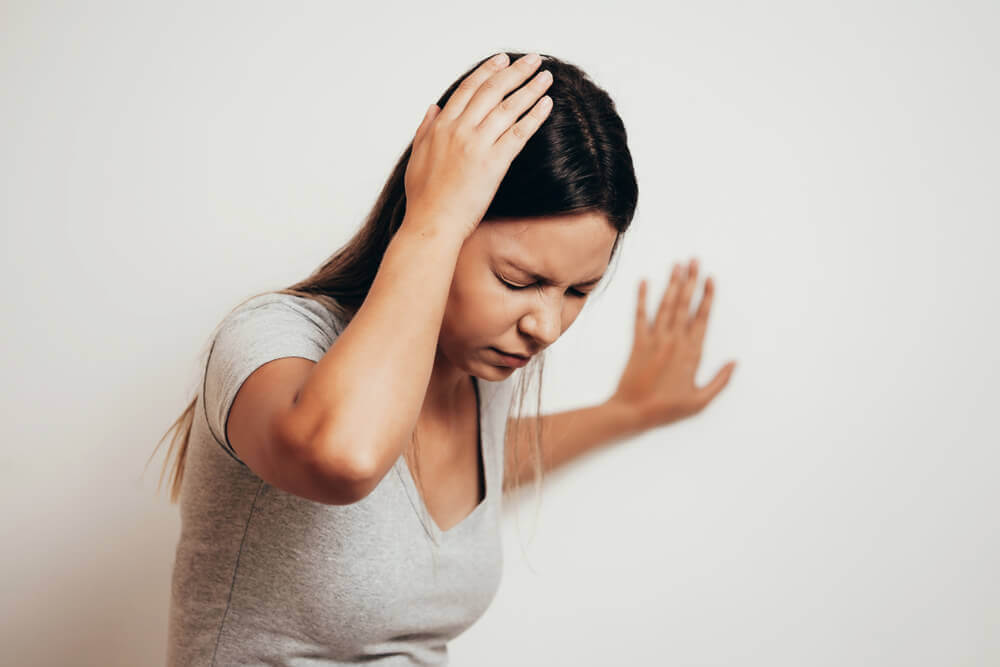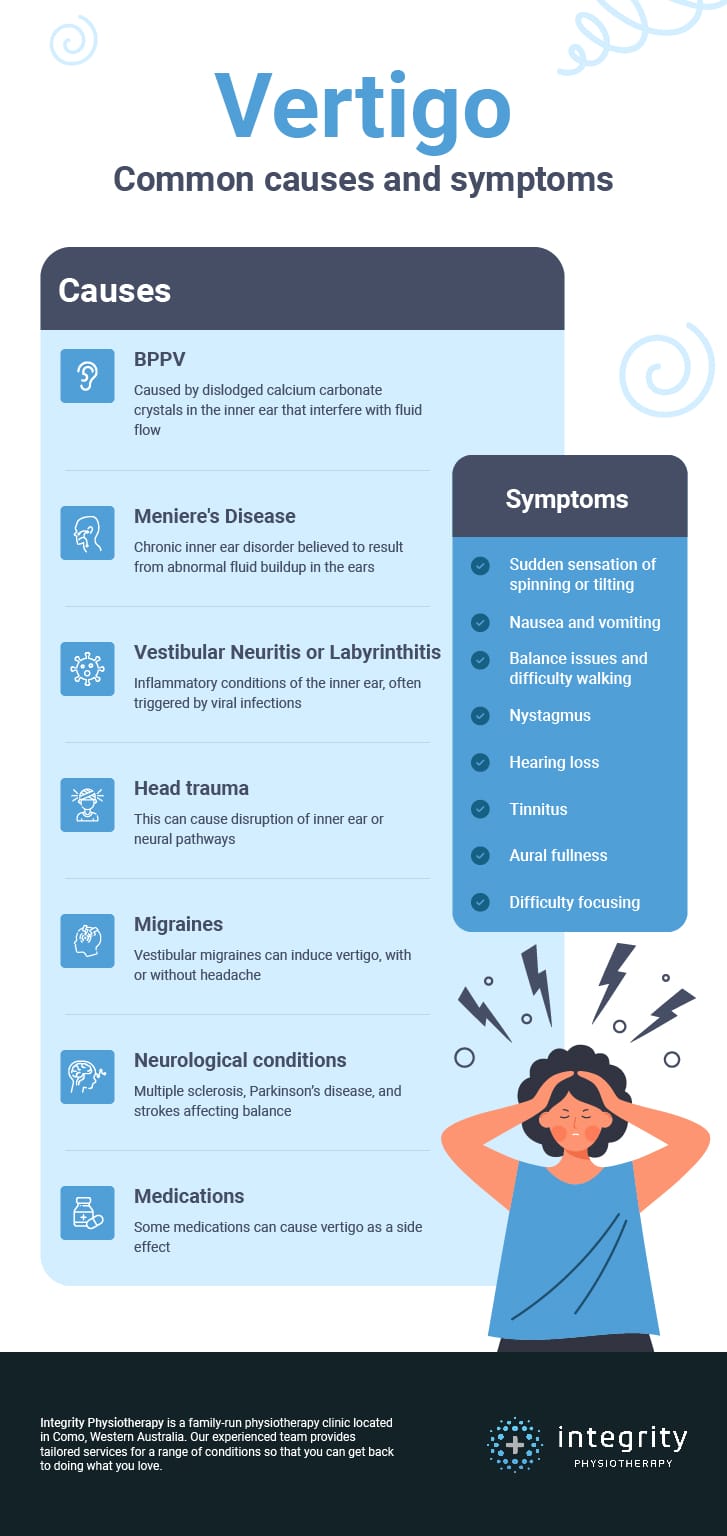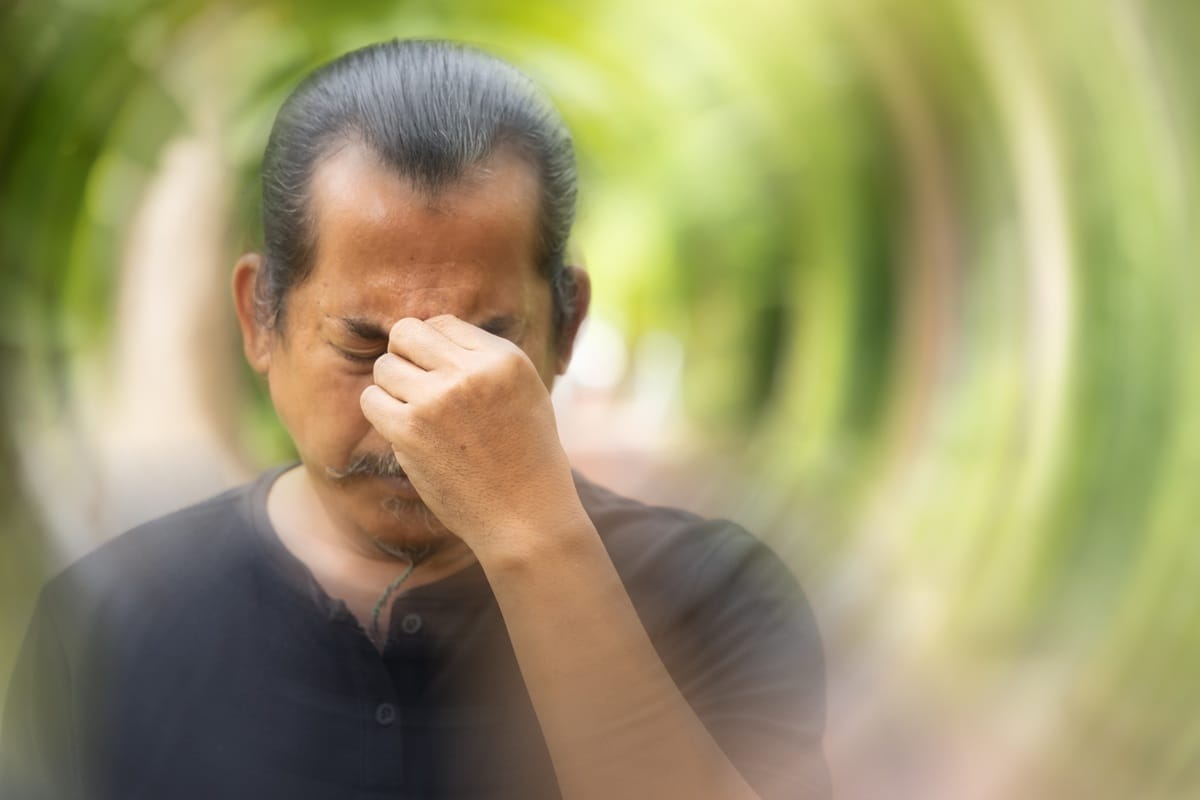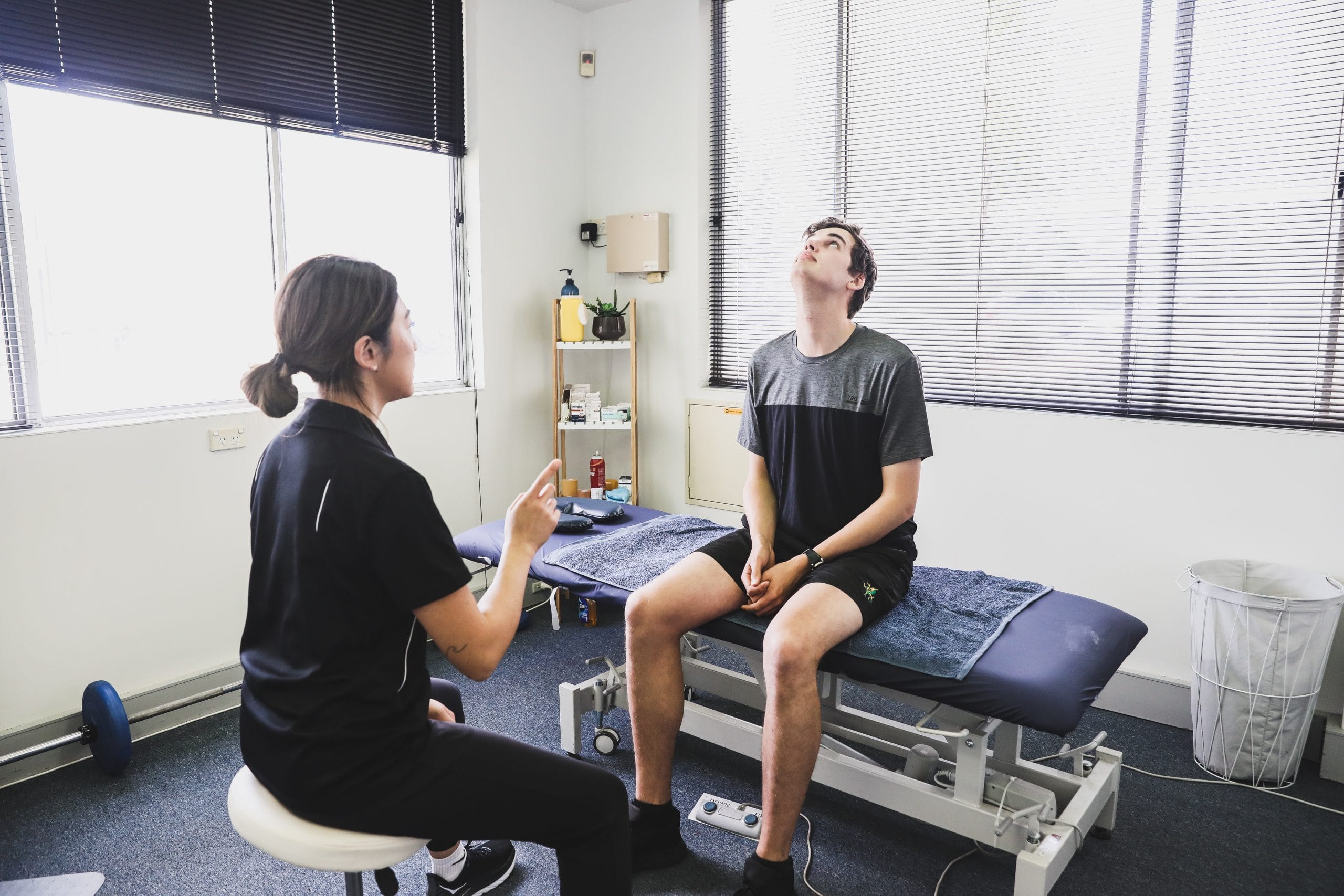
Do you ever feel like the room is spinning, or that you can’t quite keep your balance? This unsettling sensation, known as vertigo, can throw off your entire day, making simple tasks feel like daunting challenges. Vertigo isn’t just about feeling dizzy – it’s a disorienting sensation of movement that can disrupt daily life and signal underlying health concerns.
Understanding vertigo and how to manage it can dramatically improve your quality of life. If you experience recurring episodes, seeking professional help can guide you to the right solutions, restoring stability and peace of mind. So if you’re here to learn vertigo causes and treatment, read on.
What is vertigo?
Vertigo is a disorienting condition that creates the illusion of spinning or movement, making it feel like either you or your surroundings are moving even when standing still. This sensation can be intermittent or persistent, ranging from mildly uncomfortable to severely debilitating. Vertigo often disrupts daily activities, impacting balance, concentration, and overall quality of life.
Vertigo vs. Dizziness
While vertigo is often described as dizziness, it’s important to distinguish between the two. Dizziness is a broader term encompassing various sensations such as lightheadedness, faintness, and unsteadiness. Vertigo specifically refers to a false sense of movement or spinning, affecting both physical balance and spatial awareness.
Read more about the differences between vertigo and dizziness.
Types of Vertigo
Vertigo can generally be categorised into two main types:
- Peripheral Vertigo: This type is associated with issues in the inner ear or vestibular nerve, which controls balance. Common causes include Benign Paroxysmal Positional Vertigo (BPPV), Meniere’s Disease, and labyrinthitis or vestibular neuritis. Peripheral vertigo episodes can be triggered by sudden head movements or changes in position, often accompanied by nausea and difficulty walking.
- Central Vertigo: Central vertigo stems from issues within the brain or brainstem, often related to neurological conditions such as migraines, strokes, or tumours. This type of vertigo can lead to more severe and prolonged episodes, sometimes accompanied by other neurological symptoms such as slurred speech, difficulty walking, or double vision.
Common causes of vertigo

BPPV
Benign Paroxysmal Positional Vertigo (BPPV) is one of the most common causes of vertigo, characterised by brief, intense episodes of spinning or dizziness that occur with certain head movements. It is caused by small calcium carbonate crystals, known as otoconia, that have dislodged from their usual position in the utricle of the inner ear and moved into the semicircular canals.
The semicircular canals are responsible for sensing rotational movements and helping to maintain balance. When otoconia enter these canals, they can interfere with the normal flow of fluid, sending false signals to the brain about head movements. This results in a sensation of spinning or movement that can be triggered by simple actions such as turning the head, lying down, or sitting up.
Symptoms and triggers include:
- Symptoms: Episodes of BPPV are usually short-lived, lasting less than a minute. They can cause a sudden sensation of spinning or tilting, leading to nausea, balance issues, and difficulty focusing. Some individuals may also experience nystagmus, an involuntary movement of the eyes that accompanies vertigo.
- Triggers: BPPV episodes can be triggered by various head movements, including rolling over in bed, tilting the head back, or bending over. These movements displace the otoconia, causing vertigo episodes to recur.
Read more about BPPV and how to treat it.
Meniere’s Disease
Meniere’s Disease is a chronic inner ear disorder that can lead to sudden and intense episodes of vertigo. The exact cause isn’t entirely understood, but it’s believed to be an abnormal buildup of fluid in the inner ear, which affects both balance and hearing functions.
The inner ear contains fluid-filled compartments that contribute to both balance and hearing. When this fluid builds up excessively, it can disrupt the inner ear’s normal functioning, leading to incorrect signals being sent to the brain. This disruption can cause sudden spinning sensations, triggering vertigo episodes that can last from a few minutes to several hours.
Symptoms include:
- Vertigo: Episodes can be sudden and severe, causing a spinning sensation that can lead to nausea, vomiting, and difficulty standing or walking.
- Hearing loss: Fluctuating hearing loss might worsen during vertigo episodes or gradually over time. This hearing loss can become permanent in some cases.
- Tinnitus: A buzzing or ringing in the ear is a common symptom, often occurring alongside vertigo and hearing loss.
- Aural fullness: Many people with Meniere’s Disease report a feeling of fullness or pressure in the affected ear.
Vestibular Neuritis or Labyrinthitis
Vestibular Neuritis and Labyrinthitis are conditions that stem from inflammation in different parts of the inner ear, affecting balance and hearing. Vestibular Neuritis involves inflammation of the vestibular nerve, which is crucial for balance, whereas Labyrinthitis also involves inflammation that affects both the vestibular nerve and the cochlear nerve.
Both conditions are often triggered by a viral infection (or rarely, a bacterial infection). Infections that affect the inner ear or the nerves that connect the ear to the brain can lead to these inflammatory conditions. This can be something as simple as a common cold or flu.
Symptoms include:
- Vestibular Neuritis: Vertigo, nausea, vomiting, difficulty with balance. These symptoms can last several days and might improve gradually over weeks.
- Labyrinthitis: Shares many symptoms with Vestibular Neuritis but also includes tinnitus and hearing loss.
Other causes of vertigo
While conditions like BPPV, Meniere’s Disease, and inner ear infections are well-known triggers for vertigo, there can also be several other factors that contribute.
- Head trauma: This can cause disruption of inner ear or neural pathways.
- Migraines: Vestibular migraines can induce vertigo, with or without headache.
- Neurological conditions: Multiple sclerosis, Parkinson’s disease, and strokes affecting balance areas can cause vertigo.
- Medications: Certain medications can cause vertigo as a side effect.
Can stress cause vertigo? Read our blog to find out.
Impact on daily life
Vertigo can impact your daily life in a variety of ways, which is why it’s so important to get diagnosed early and treat the underlying cause.
Physical mobility and safety
The intense spinning sensations associated with vertigo can impair balance and coordination, making basic activities like standing or walking a challenge. This increases your risk of falls and related injuries, especially for older adults who might have existing balance issues.
Mental health and anxiety
The unpredictable nature of vertigo episodes can lead to anxiety and fear of future attacks. This fear often prevents people from doing their normal activities, including driving, working, or socialising. This can lead to more isolation, impacting mental health.
It can also just be emotionally taxing. Constantly managing symptoms and worrying about the next episode can be exhausting and impact overall quality of life.
Work and productivity
Productivity can take a hit when you’re dealing with vertigo – especially if your job involves physical activity or precise movements. The frequent absences or reduced performance that might come from this can also have long-term consequences on career progression and stability.
Personal independence
Daily tasks that require concentration and physical stability, like cooking, shopping, or exercising, can become daunting. This can lead to a person’s sense of independence and self-sufficiency to suffer.
Diagnosis of vertigo
Diagnosing vertigo starts with a thorough evaluation by a healthcare professional. They’ll be looking to figure out the type of vertigo and the underlying cause that might be causing the symptoms. This involves:
- Understanding your medical history. Your GP will ask about the onset, duration, and nature of the vertigo episodes.
- A physical examination that focuses on your neurological and vestibular systems to assess their functionality. This includes tests for balance, gait, and eye movements.
- Specific tests if results are inconclusive. This might include a hearing test, VNG, MRI, or CT scan.
Treatment for vertigo
Treatment for vertigo will often depend on the underlying cause, but generally involves a combination of lifestyle changes, medical treatments, and different therapeutic approaches.
Avoid triggers
Learning what triggers your vertigo is the first step in managing it. Common triggers include sudden head movements, dehydration, or excessive stress.
Keeping a diary of vertigo episodes can help identify specific triggers. Once identified, strategies can be developed to avoid these triggers.
Lifestyle and home remedies
Simple lifestyle changes and home remedies can help alleviate vertigo symptoms, including:
- Head movements: Specific exercises, like the Epley manoeuvre for BPPV, can help displace ear crystals back to their correct position in the inner ear, reducing symptoms. These can often be performed at home.
- Dietary changes: Reducing salt intake can help manage conditions like Meniere’s disease by lowering fluid retention in the body. Saying hydrated and avoiding caffeine and alcohol can also minimise the frequency of vertigo episodes.
- Balance exercises: Engaging in activities that improve balance, like tai chi or yoga, can strengthen your body’s vestibular system and improve overall stability.
Read more about how to treat vertigo at home.
Medical treatments
Getting regular medical check-ups is essential. They will monitor your conditions associated with vertigo and can also catch any changes or developments early on, allowing for adjustments in treatment plans as needed.
Depending on the cause and severity of your vertigo, some medical treatments might be recommended to you.
- Antihistamines and anti-nausea medications: These can actually help manage the acute symptoms of vertigo (dizziness, nausea, motion sickness).
- Canalith Repositioning Procedures: These are simple, non-invasive procedures performed by a healthcare provider to move the dislodged crystals that cause vertigo.
- Steroids and antibiotics: In cases where inflammation or infection is the root cause (vestibular neuritis, labyrinthitis), these medications can be effective.
Therapeutic approaches
Vestibular physiotherapy plays a crucial role in the long-term management of vertigo. Physios specialising in vestibular disorders are crucial in assessing and implementing rehabilitation strategies that are actually effective and tailored to you.
The role of physiotherapy in the treatment of vertigo
Physiotherapy is essential when it comes to treating and managing your vertigo symptoms, especially when it comes to specialised exercises and hands-on, manual therapy.
Read more about how a physiotherapist can help with vertigo.
Vestibular Rehabilitation Therapy (VRT)
VRT is a specialised form of therapy that involves a series of exercises designed to compensate for inner ear deficits and improve central nervous system adaptation. These exercises can include:
- Habituation exercises: These are used to treat symptoms of dizziness that occur from self-motion or visual stimuli. Habituation exercises involve repeated exposure to specific head movements or visual stimuli that trigger vertigo, gradually decreasing the sensitivity of the brain’s response to these movements.
- Gaze stabilisation exercises: These are used to improve control of eye movements so vision can remain clear during head movement. This is crucial for any tasks that might involve changing focus quickly from one point to another.
- Balance training exercises: These exercises are designed to improve steadiness and prevent falls by challenging the vestibular system. This might include activities like standing on one leg, walking on uneven surfaces, or exercises that require shifting body weight.
Canalith repositioning manoeuvres
For conditions like BPPV, your physiotherapist might perform manoeuvres like the Epley or Semont. These techniques are intended to move the dislodged calcium crystals in the inner ear back to their proper position, relieving the immediate symptoms of vertigo. These manoeuvres can be highly effective and result in relief from vertigo symptoms after just a few sessions.
Education and self-management strategies
Physiotherapists also play a big role in educating you on self-management strategies to deal with symptoms at home. This might include teaching the manoeuvres done in session so you can perform them at home if symptoms reoccur, lifestyle modifications to avoid triggers, and safety tips to prevent falls during dizzy spells.
Follow-up and ongoing support
Regular follow-up sessions are important to monitor progress, reassess conditions, and make necessary adjustments to the therapy regimen. The ongoing support from your physio ensures you continue to practice exercises correctly and make continued progress in managing your vertigo.
Take control of your vertigo today
If you’re struggling with vertigo and looking for relief, vestibular physiotherapy can help. Our experienced team offers personalised treatment plans to manage and reduce your symptoms effectively.
Take the first step towards regaining your balance and confidence – book an appointment today.




